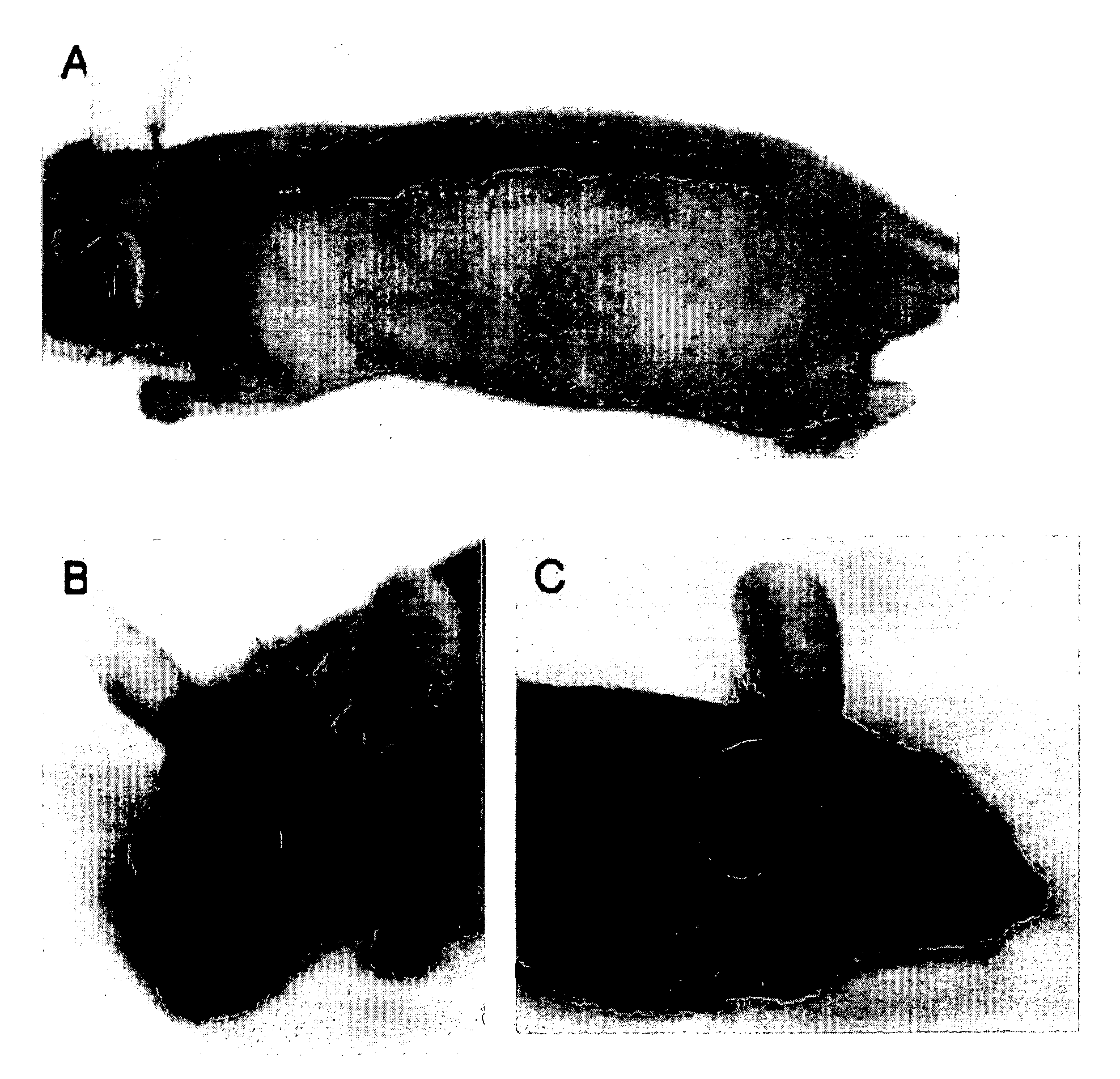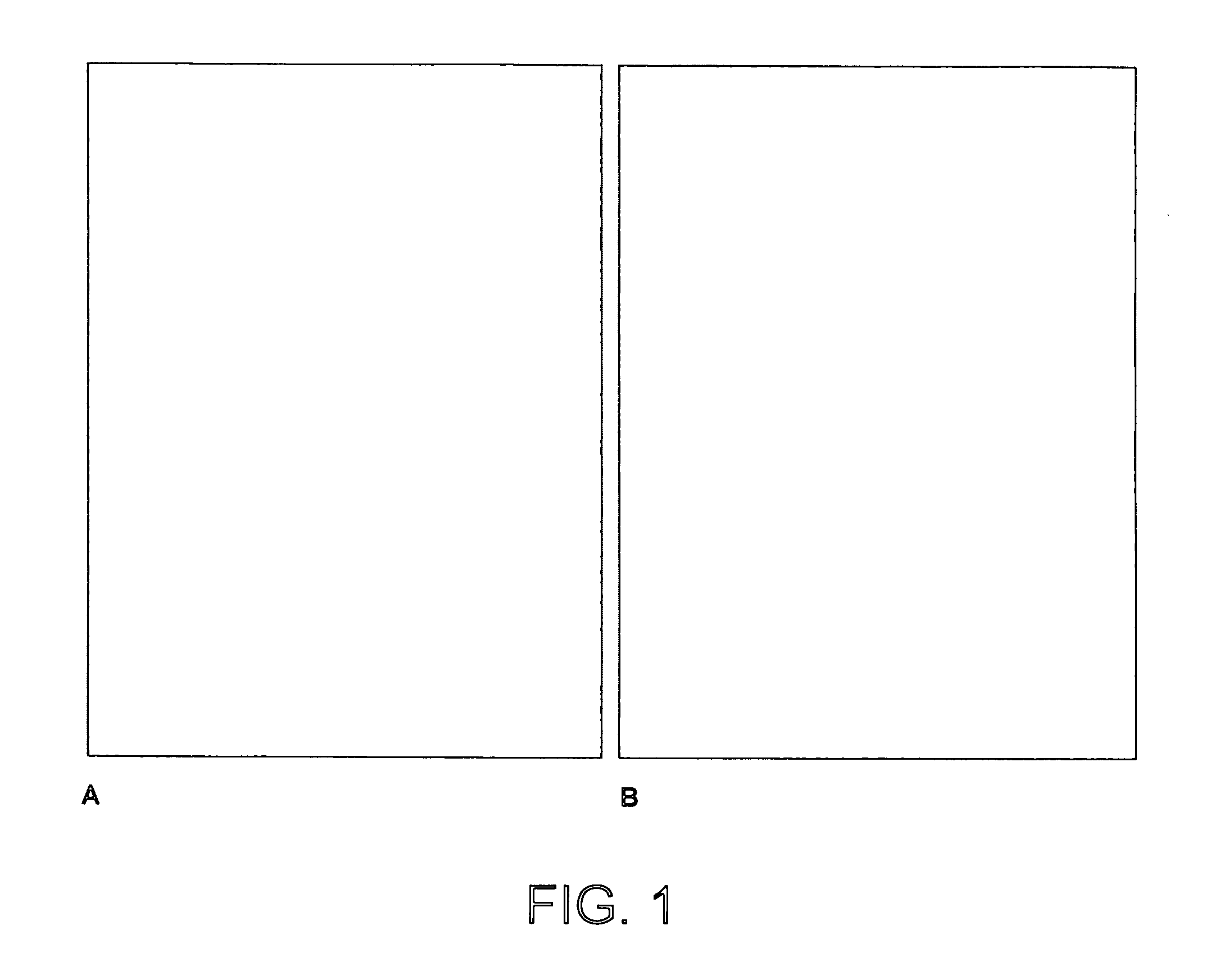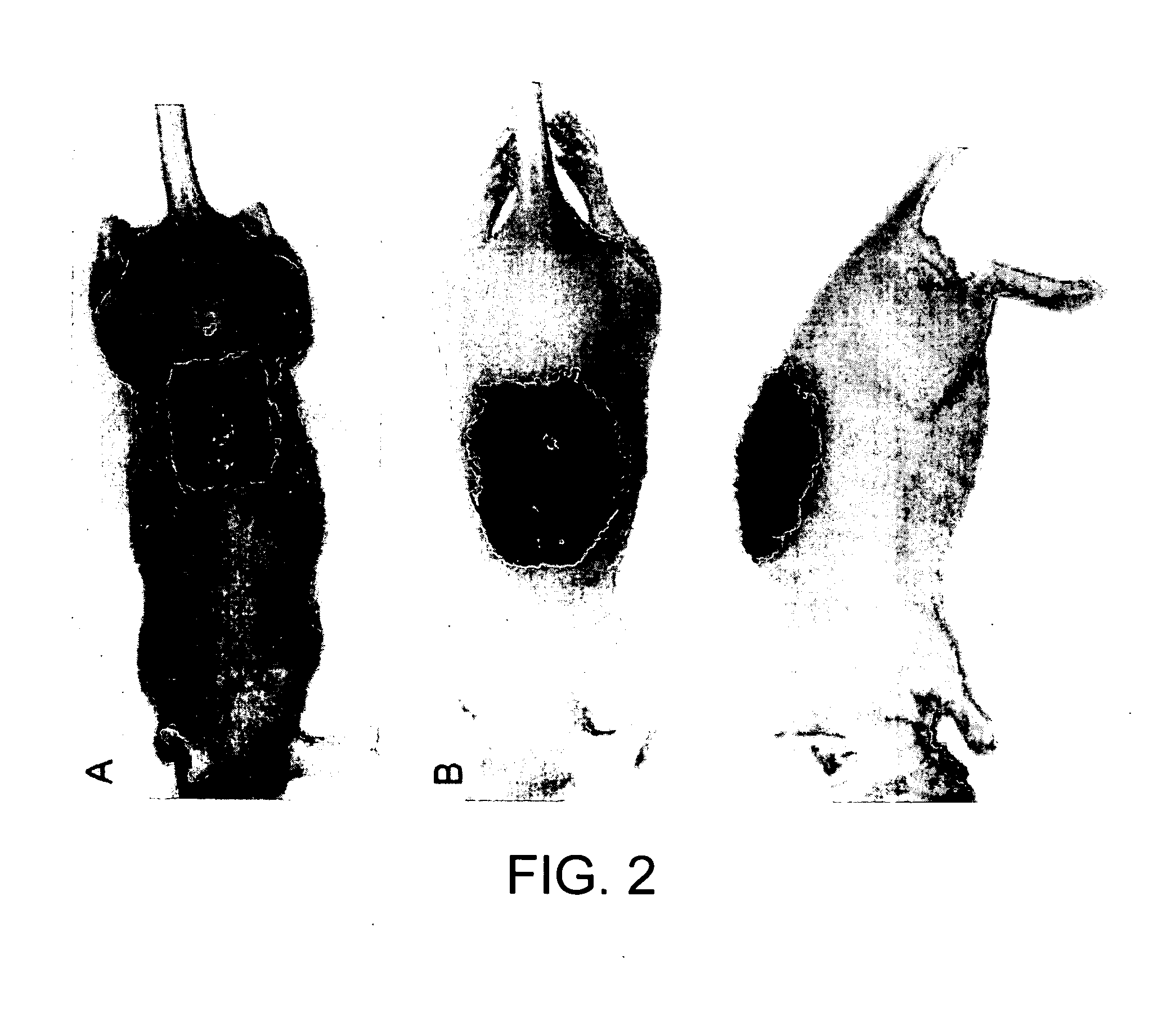Compositions and methods to generate pilosebaceous units
a technology of pilosebaceous cells and compositions, applied in the field of compositions and methods to generate pilosebaceous cells, can solve the problems of morbidity rather than mortality, lifelong suffering, and the inability of grafted skin to completely restore normal skin function
- Summary
- Abstract
- Description
- Claims
- Application Information
AI Technical Summary
Benefits of technology
Problems solved by technology
Method used
Image
Examples
experimental examples
Example 1
A Simplified Planar Hair Forming Protocol for High Throughput Assay Clinical Use
[0136]This example shows a method in which a large number of pilosebaceous units, including hair, are able to be grown from a dissociated cell suspension in vivo. While methods for hair generation have been described in the past, this invention is an improvement over prior art methods by making the process more user friendly for the clinician as well as more comfortable for the patient or animal. Additionally, by seeding these cells in a scaffold-like scaffold, it was unexpectedly shown that the cells will reorganize themselves in a way such that proper orientation of hair growth is obtained in a cosmetically acceptable manner. This protocol can be useful for high throughput screening of molecules or drugs important for hair formation. It may also have future clinical benefits for hair regeneration after severe wound injury and the treatment of alopecia.
Material and Methods:
[0137]Cell Isolation:...
example 2
Prepare Skin Stem Cells and Their Environment for Delivery
[0143]Given one million skin cells capable of forming hairs, 10 big hairs or 1000 small hairs can be formed. Big hairs are generally the preferred outcome. The regulatory patterning of this process has been studied by the inventors (Maini et al. (2006) Science 314(5804):1397-1398). In vitro studies showed that Turing reaction-diffusion plays a critical role in periodic patterning a homogenous population of stem cells (Jung et al. (1998) Dev Biol. 196(1):11-23; Jiang et al. (1999) Development 126(22):4997-5009). This suggests that the system can self-organize and cells respond to their local environment to assemble organs with a specific architecture based on cells ability to use their intrinsic (e.g. growth factor receptors, adhesion molecules) and extrinsic (e.g. growth factors, extracellular matrix molecules, etc.) properties. Before explant culture, dissociated multi-potential skin precusor cells are pre-plated at high cel...
example 3
A Simplified Planar Hair Forming Protocol for High Throughput Assay Clinical Use
[0147]In an extension of the experiment described in Example 1, Applicant provides the following Example 3.
Material and Methods:
[0148]Cell Isolation: Multipotential skin precursor cells are currently obtained from neonatal mice using techniques from previously published work. Briefly, neonatal mice are harvested shortly after birth (within the first 24 hours) and euthanized. The truncal skin is then dissected off with sharp forceps. Epidermis and dermis are separated by floating in cold 0.25% trypsin overnight. Epidermal cells are then dissociated into a cell suspension by cutting into fine pieces and manual tituration with a serological pipet. Single epithelial cells are separated through a 70 μm cell strainer to exclude cells of the stratum corneum. The dermal cells are individually dissociated using warm 0.35% collagenase for 40-50 minutes at 37° C. DNase I is then added for 5 minutes at RT before man...
PUM
 Login to View More
Login to View More Abstract
Description
Claims
Application Information
 Login to View More
Login to View More - R&D
- Intellectual Property
- Life Sciences
- Materials
- Tech Scout
- Unparalleled Data Quality
- Higher Quality Content
- 60% Fewer Hallucinations
Browse by: Latest US Patents, China's latest patents, Technical Efficacy Thesaurus, Application Domain, Technology Topic, Popular Technical Reports.
© 2025 PatSnap. All rights reserved.Legal|Privacy policy|Modern Slavery Act Transparency Statement|Sitemap|About US| Contact US: help@patsnap.com



